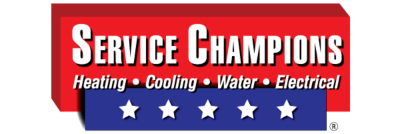What You Need To Know About The EPA HCFC-22 (R-22) Phaseout

October 28, 2024
The most common type of refrigerant used in air conditioning and cooling equipment is HCFC-22 (or R-22). If your air conditioner or heat pump was manufactured before 2010, it most likely uses R-22 refrigerant.
Due to the environmental impact of these refrigerants and their effects on ozone depletion, fluorocarbons, and especially hydrochlorofluorocarbons (HCFCs), are being phased out by the Environmental Protection Agency (EPA). While you will still be able to find some R-22 refrigerant, it will be more expensive, and you will need to rely on reclaimed and previously produced quantities.
As a result of the EPA HCFC-22 phaseout, many homeowners are upgrading to modern air conditioners that use more eco-friendly refrigerants. Keep reading to learn more about the phaseout and how to prepare your home for the transition.
Understanding the EPA HCFC-22 Phaseout
HCFCs used in refrigerants have been found to cause ozone depletion, and continued use could cause irreversible damage. To protect the ozone layer, the Environmental Protection Agency has implemented a gradual phase-out of these chemicals under the Clean Air Act. The refrigerant phase-out schedule began in 1994 with CGCs and other harmful substances contributing to ozone depletion. Since then, the production and import of these chemicals have been reduced, with a complete HCFC ban enacted on January 1st, 2015. By 2030, a complete elimination of HCFCs is expected, with no production or import allowed.
Impact on Homeowners with R-22 AC Units
The lengthy HCFC phaseout allows homeowners to replace aging air conditioners with new units in their natural lifecycle. However, the limited supply of R-22 supplies is increasing costs, making repairs and services more expensive. If you use equipment that uses R-22 refrigerant or the other 34 HCFCs that are being phased out, it’s best to replace your HVAC equipment with a more ozone-friendly refrigerant sooner rather than later. The longer you wait, the more expensive your refrigerant services will be.
Alternatives to R-22: What Are My Options?
The EPA regularly reviews refrigerant substitutes according to environmental and health risks, including ozone depletion potential, global warming potential, flammability, toxicity, and exposure potential. The most common alternative to R-22 that’s in line with the EPA regulations on refrigerants is R-410A, which is sold under various names, such as GENTRON AZ-20®, SUVA® 410A, Freon™ 410A and PURON®. Additional EPA-approved substitutes you can use include:
R134A
R407C
R407A
M099
Benefits of Upgrading Your AC System
While there is no requirement to have refrigeration equipment converted or replaced for non-ozone-depleting substitutes, it is still in your best interest. Today’s air conditioners not only use ozone-friendly refrigerants but offer many benefits to your home, health, and wallet.
The top benefits you’ll see from upgrading to a new air conditioner include:
Reduced energy use: Over time, air conditioners become less efficient and use more energy to cool your home. Upgrading to a high-efficiency system will lower your usage and keep your utility bills down.
Enhanced home comfort: Wear and tear will cause your air conditioner to operate at a reduced capacity and overwork to maintain a cool home. With a new AC, you’ll notice improved performance and faster cooling, enhancing your home's comfort.
Improved indoor air quality: New ACs are equipped with advanced filtration systems, improved air circulation, and humidity control that improve the air quality in your home.
Longer-lasting: Modern air conditioners have a longer lifespan than previous models, lasting up to 15 years with proper maintenance.
Call Service Champions to Schedule AC Replacement Today!
Stay ahead of the HCFC phaseout and contact our team at Service Champions to upgrade your air conditioner today. Our expert HVAC technicians will help you find a high-efficiency system that suits your home size, cooling needs, and budget. With a new unit, you won’t have to worry about rising R-22 costs and will benefit from lower energy bills, improved air quality, and enhanced home comfort.
If you’re not quite ready to upgrade your air conditioner, explore our comprehensive HVAC solutions, including expert repairs and professional maintenance services. Whether your AC is due for a tune-up or requires more extensive repairs, our certified HVAC technicians can help.
Call us or book online to schedule your service in San Jose or surrounding areas today! Make sure to ask about our MVP+ membership and flexible financing options like 0% APR for 12 months.
Frequently Asked Questions
How can I tell what kind of refrigerant my air conditioner uses?
You can find out what type of refrigerant your air conditioner or heat pump uses by checking the nameplate on the back or side of your outdoor condenser unit. If you can’t find or read the nameplate, check the owner’s manual or contact one of our HVAC technicians for assistance.
How can I make my current R-22 AC unit last longer?
If you currently have an R-22 AC unit, regular maintenance is the best way to extend its lifespan. Contact our team to schedule an annual maintenance appointment, during which one of our HVAC technicians will perform a comprehensive inspection, cleaning, and tune-up of your unit to help it reach its maximum lifespan.
What should I do if my AC unit has a refrigerant leak?
Refrigerant leaks pose a serious threat to your household's health and safety. Contact our team immediately if you suspect your AC unit has a leak. We’ll dispatch a technician to inspect your unit, confirm the leak, and repair it before it progresses.
Is it legal to recharge my AC unit with R-22 refrigerant?
As of January 1st, 2020, it is no longer legal to import or manufacture R-22 refrigerants. For old systems that rely on R-22, it is still possible to have it recharged but the supply is limited and costs are expected to increase. If your air conditioner requires more refrigerant, contact our Comfort Advisors to explore your options.
